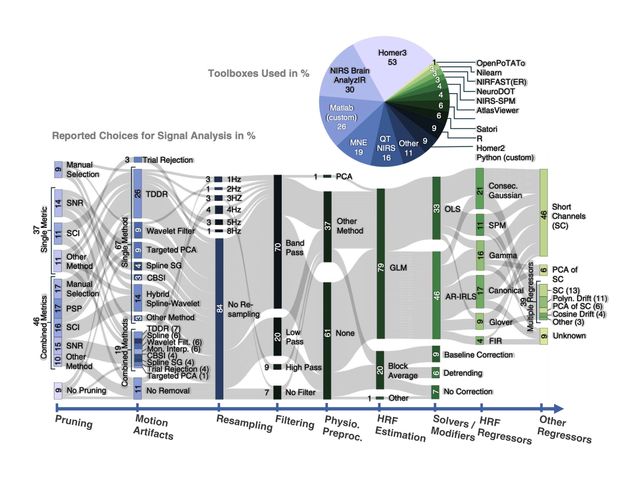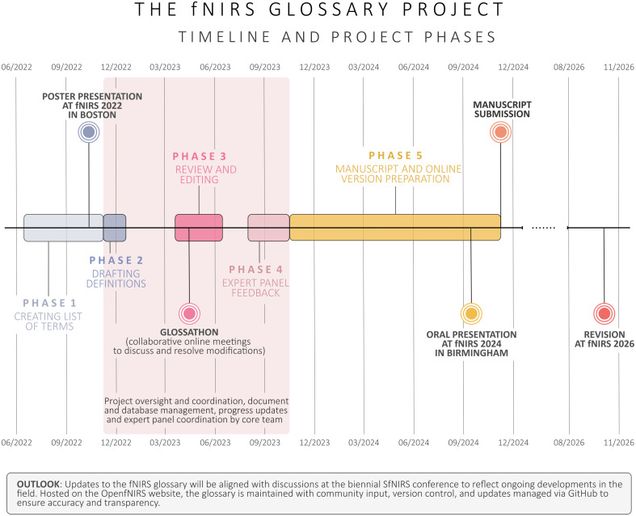Meryem Yücel Leads a Group of fNIRS Experts to Advance Field Accessibility and Resources
A society of neuroscience experts are creating a dedicated hub of resources for fNIRS research.
by Danny Giancioppo
Research Associate Professor Meryem Yücel (BME) isn’t just a technical director at the Neurophotonics Center––she’s also a leading expert in the field of functional Near-Infrared Spectroscopy (fNIRS), with a keen interest in community work. While there are many researchers at Boston University utilizing fNIRS, Yücel’s unique approach of large-scale collaborative projects has brought about a new swath of introductory-to-advanced resources to the field. By bringing many minds together, Yücel believes that greater results can be achieved.

To understand Yücel’s interest in interdisciplinary fNIRS research, she looks back to her high school years in Istanbul, Turkey. At the time, she was fascinated by both medicine and engineering, and she dreamed of a program that combined the two -unaware then of the existence of biomedical engineering. There she harbored an interest in brain function and medicine, and through the lens of engineering, discovered a particularly robust avenue for research.
“[With] modeling, you change parameters and simulate everything—but in the end, it’s still just a model,” Yücel explains. “I wanted to work with real data, measured directly from actual brains.” This curiosity led her to explore fMRI, EEG, and fNIRS, which she describes as “modern tools” for extracting information from the brain.
One of the promising aspects of fNIRS, according to Yücel, is its applicability to real-world scenarios. In her own words, you can apply fNIRS “to many, many more ecologically valid situations compared to other imaging modalities.”
With such a variance in application, however, the fNIRS field comes with the hurdles of any burgeoning STEM field, including discrepancies and a growing baseline of information. Yücel endeavors to get ahead of the learning curve, and provide the necessary resources to supplement fNIRS scientists. To that end, she has been a part of several collaborative publications emphasizing inclusivity and best practices in the field.
“If you consider all of these [projects], it’s about how to do science with the best practices, but also [stressing] inclusive science and open science,” Yücel explains. “It was also a mix of serendipity. The right people came together, the right ideas came together, and then it just worked out like that.” Such projects came together through the joint work of the fNIRS community––including the Society for functional Near Infrared Spectroscopy (SfNIRS), a group which aims to “promote the exchange of ideas, interdisciplinary collaboration, and education.”
One such example includes a recent paper on Inclusivity in fNIRS Studies. The study discusses the efficacy of fNIRS techniques on people with different hair and skin properties; for example, some characteristics are able to get a better signal than others. Yücel and team therefore looked into the scope of the issue, as well as creating a set of guidelines to tackle these differences.

Another study was on the fNIRS Reproducibility Study Hub (FRESH) which examined how differences in data analysis pipelines affect scientific results. The study consisted of 38 labs and over 100 researchers worldwide who analyzed the same data set. After sharing all the details of their pipeline, authors compared each lab and researcher’s hypothesis testing outcomes, incorporating aspects such as prior fNIRS experience and confidence. Despite using varied methods, nearly 80% of teams agreed on group-level findings, especially when hypotheses were strongly supported by prior literature.
Yücel points out that the project wasn’t just about fNIRS research, but its practices. “The overarching question is how science itself is affected by the scientists themselves. How objective can we be?”
After gathering results, the research team found that researchers with more experience tended to produce more comparable data to one another than those with less experience. Which is exactly what Yücel and team had anticipated. “This is both about trying to motivate the field to be more open about their pipelines, sharing all the data, but also to encourage them to do best practices in their analysis so that we as a scientific community do better in general.”
This finding aligned with earlier community efforts Yücel helped lead, such as the widely circulated “Best practices for fNIRS publications” paper, which provides guidelines to enhance reliability, repeatability, and traceability in reported fNIRS studies. The paper also includes a checklist to support both authors and reviewers.
The swath of growing fNIRS research doesn’t just end with the Society for fNIRS, however––Yücel is also a member of the Board of Directors of OpenfNIRS, a committee driven by the community for community support, with the mission to foster the development of an fNIRS ecosystem, as well as to promote the open dissemination of related hardware and software. “For instance,” she says, “[if] someone collected data, analyzed it, and published it in whatever journal––as a researcher, I should be able to go download that data set, analyze it and produce the same results. There’s OpenNeuro and other websites that allow data share in standard formats.”

Possibly the largest quantitative undertaking has been the The fNIRS glossary project, which began in 2022 at an fNIRS conference. There was an open call for terms and definitions, utilizing prior resources as well as interested volunteers, which were then carefully reviewed by a panel of experts. Now newly published, the glossary is intended to serve as a foundational reference for the field—but it remains a living document. The team plans to revisit and expand it every couple of years to incorporate emerging terms.
“We will always have new terms,” Yücel says, “or maybe people will fix some of the terms we already put out there.” For that reason, they store everything on a dedicated GitSpace, where they plan to update the glossary at least once every two years, around the next SfNIRS conference.
A long-term fNIRS goal, Yücel imagines, would be to develop a widespread-use, everyday world monitoring device––as she put it, a Fitbit for the brain. This could assist in recording brain health, stress levels, and other everyday fluctuations, such as when to exercise or do more cognitive tasks. But, this is more aspirational than concrete. Meanwhile, there are many interesting advancements already taking form in fNIRS research.
There is a multitude of convergent research projects involving fNIRS across BU’s campus, reflecting the technology’s versatility and growing impact. Yücel’s team, for instance, has collaborated on efforts to integrate fNIRS into wearable systems that support neurorehabilitation, as well as to study gait disturbances in Parkinson’s disease, language processing in individuals with aphasia, and cognitive development in children—all within more naturalistic, real-world environments.
For Yücel and her collaborators, the maneuverability of fNIRS is its greatest advantage. “A child can sit on their parent’s lap to have measurements taken, rather than being placed in an fMRI,” she explains. “It brings neuroscience closer to everyday life—and with that, closer to real-world impact.”